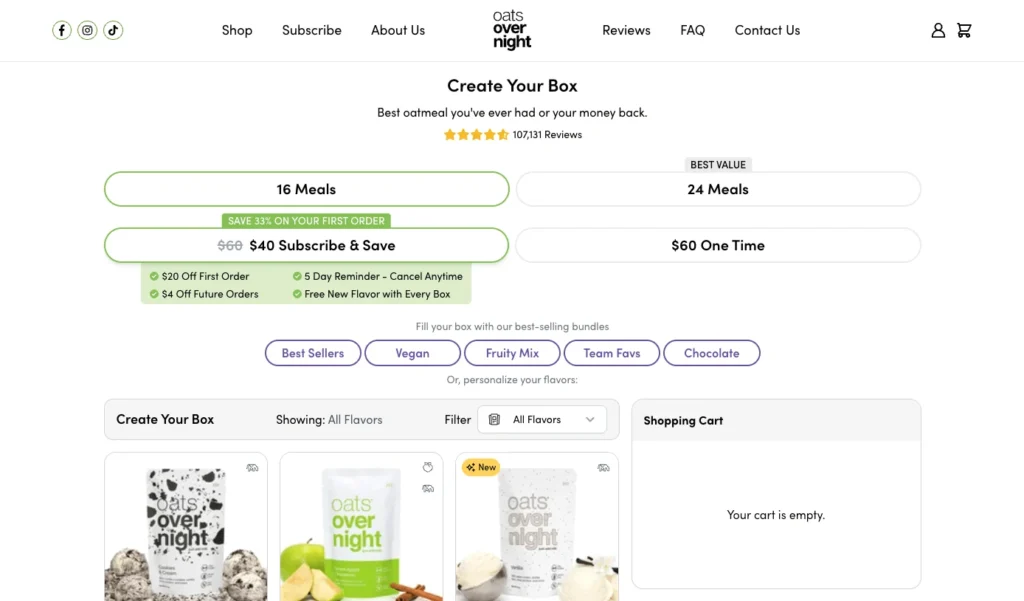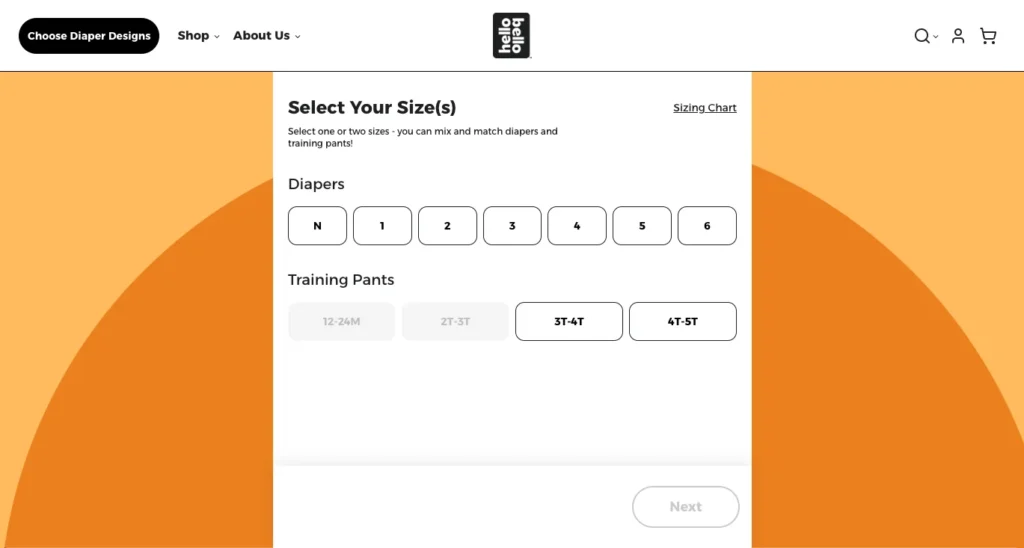In today’s highly competitive ecommerce landscape, data-driven personalization is key to boosting customer retention. Using zero-party and first-party data is a powerful, cost-effective strategy to elevate your efforts.
In this blog, we’ll explore how to use these data insights to create personalized experiences, featuring examples from successful brands like Curology, Oats Overnight, and Hello Bello.
Key takeaways
- Zero-party data, voluntarily shared by customers, and first-party data, collected from customer interactions, are both crucial for crafting personalized experiences.
- Utilizing zero-party and first-party data can significantly enhance customer retention and LTV via personalized offers, products and services.
- As privacy concerns rise, ecommerce brands should use transparent data collection methods like interactive quizzes and preference centers, ensuring compliance and enhancing customer relationships.
Introduction to zero-party data & first-party data
Understanding the differences between zero-party data and first-party data is essential for implementing effective personalization strategies in ecommerce. Both types of data provide valuable insights into customer preferences and behaviors, but they are collected and used differently.
What is zero-party data?
Zero-party data is information that customers intentionally and proactively share with a brand. This includes preferences, purchase intentions, personal context, and how the individual wants to be recognized by the brand.
Zero-party data is unique because it is given freely and willingly by customers, often through surveys, quizzes, and preference centers. Brands that are transparent about data usage and capture zero-party data see a 40% increase in consumer trust.
What is first-party data?
First-party data, on the other hand, is collected directly from customers based on their interactions with a brand. This includes data from website visits, purchase history, subscription details, and engagement metrics.
First-party data is valuable because it reflects actual customer behaviors and can be used to create highly personalized marketing campaigns. Businesses that excel in collecting and using first-party data achieve 2.9 times higher customer lifetime value (CLV).
Both zero-party and first-party data are crucial for ecommerce businesses aiming to enhance customer retention through personalized experiences. These data types help brands understand their customers’ needs and preferences, allowing them to tailor marketing efforts, improve product recommendations, and build stronger customer relationships.
How to collect and use zero-party data
Zero-party data collection methods can be a major driver towards customer engagement—recent data from HubSpot found that interactive content and quizzes can increase customer engagement rates by up to 70%. Effective ways to collect zero-party data include:
- Surveys and quizzes: Engaging customers with fun and informative surveys or quizzes can provide valuable insights. For instance, Curology uses detailed quizzes to gather information on skin concerns, routines, and preferences.
- Preference centers: Allowing customers to update their preferences on a brand’s website ensures that the data collected is always up-to-date and relevant.
- Interactive content: Polls, interactive emails, and personalized recommendations can encourage customers to share their preferences directly.
- Contests and giveaways: For brands looking to quickly grow their subscriber bases, this zero-party method offers a high reach, low investment tactic to drive volume.

How to collect and use first-party data
Similarly, leveraging first-party data involves different methods that provide deep insights into customer behavior. Here are some effective ways to collect and leverage first-party data:
- Website analytics: Tracking customer interactions on a website provides insights into browsing behavior and purchase patterns.
- Customer feedback: Collecting feedback through reviews and customer service interactions helps brands understand customer satisfaction and areas for improvement.
- Engagement metrics: Monitoring email open rates, click-through rates, and social media interactions provides valuable data on customer engagement. Diving into product preferences can fuel data insights for effective cross-sell, bundle or upsell campaigns.
- Subscription models: A subscription model opens brands up to collect detailed customer information over time, including preferences, purchasing habits, and engagement patterns. This data can be used to strategically inform future upsell and cross sell campaigns—ultimately increasing LTV. In fact, data from McKinsey indicates that companies using first-party data within subscription models report a 30% higher retention rate compared to those who don’t. Consumer brands like Hello Bello offer a lower barrier to entry with their subscription models, giving shoppers peace of mind to try their products at a lower cost—so they can try, swap or cancel at any time. This approach not only offers peace of mind but also generates valuable data that can be used to enhance personalized offers in the future. Oats overnight takes personalization one step further, offering up “create your own” subscription boxes, allowing shoppers to tailor their experience while providing the company with valuable first-party insights to optimize their marketing strategies.

Future trends in ecommerce personalization: How zero-party & first-party data will evolve
The importance of zero-party and first-party data will continue to grow as privacy regulations tighten. According to a 2023 survey 79% of consumers express concern about how companies use their data, and 64% have already taken steps to protect their privacy online. Ecommerce brands must start to develop innovative methods to collect and leverage this data effectively. This, coupled with Google’s announcement to end third-party cookies mean now is the time to get ahead.
By prioritizing transparency and user consent via zero-party and first-party methods, brands can build trust with their customers while gaining valuable insights. Effectively utilizing zero-party and first-party data not only ensures compliance with regulations but also enhances customer relationships and boosts profitability. Ecommerce brands will need to develop innovative methods to collect and leverage this data effectively.
This evolution will likely include more interactive and value-based data collection techniques, such as personalized quizzes, preference centers, and direct customer feedback mechanisms. Brands will need to focus on transparency and trust, ensuring that customers understand the benefits of sharing their data.
With advancements in AI and machine learning, ecommerce personalization techniques will become increasingly sophisticated. Future trends may include:
- Dynamic content customization: Real-time adaptation of website content based on user behavior and preferences.
- Advanced product recommendations: UsingAI to offer more precise and relevant product suggestions.
- Real-time engagement: Providing instant responses and personalized interactions through chatbots and virtual assistants.
- Behavioral email triggers: Automated emails triggered by specific customer actions, such as abandoning a cart or viewing a product multiple times.
By understanding these valuable sources of first-party and zero-party data ecommerce brands can create highly personalized and engaging customer experiences, driving retention and increasing lifetime value.



